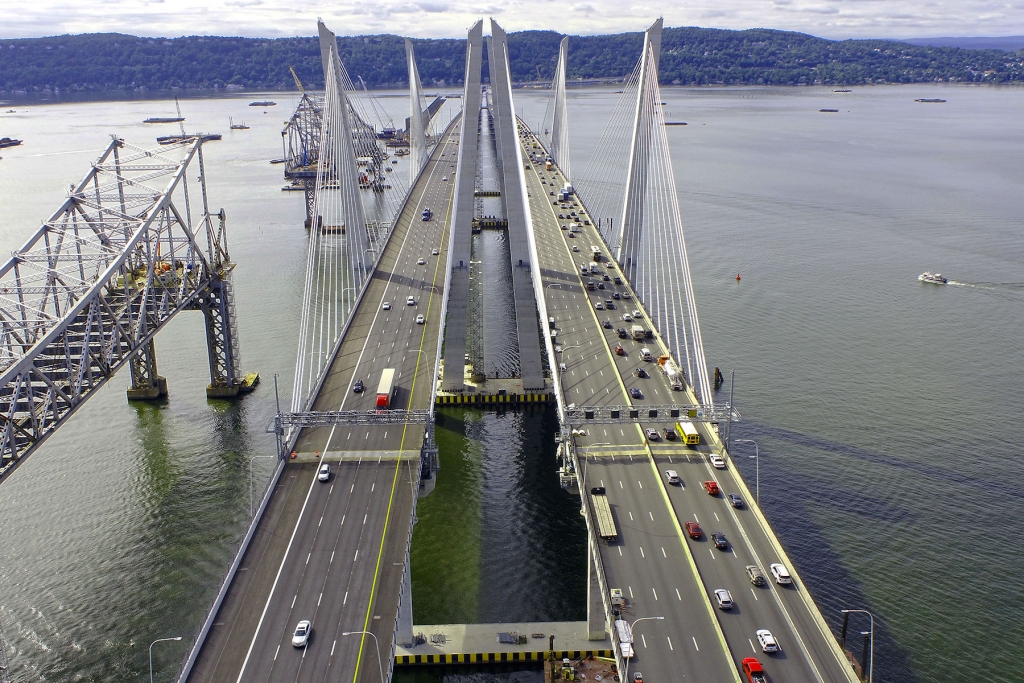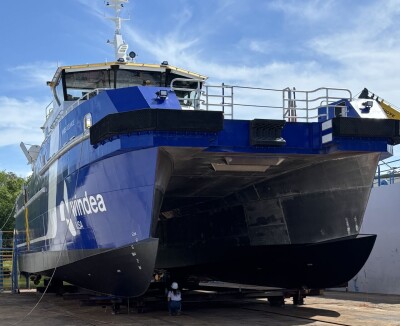The main channel in New York’s Hudson River will be closed to traffic Tuesday morning while the remaining eastern span of the old Tappan Zee Bridge is demolished with explosive charges, Coast Guard and state transportation officials say.
Tappan Zee Constructors has been dismantling the 63-year-old bridge since completing the 3.1-mile, $4 billion Mario M. Cuomo bridge last year, shipping out the old steel and concrete for recycling or emplacement on artificial fishing reefs off Long Island.
But just before the new bridge opened in September, workers heard loud popping sounds on the old span. Engineers determined the remaining 672’ eastern anchor span was “damaged but stable with certain key components highly stressed,” according to the New York State Thruway Authority.
After more analysis the authority and Tappan Zee Constructors concluded the safest way to remove the old bridge would be to bring it down in an explosive demolition. The job will be done by Controlled Demolition Inc., Phoenix, Md., which has long experience with dropping bridges, including the old Kosciuszko Bridge crossing Newtown Creek between Brooklyn and Queens in New York City in 2017.

The new Mario M. Cuomo Bridge replaced the old Tappan Zee Bridge, in service from 1955 to 2017. NYSTA photo.
The demolition had been scheduled for around 9:30 a.m. Saturday, but was postponed to 10 a.m. Tuesday because high winds last week impeded preparations. In its Dec. 30 Notice to Mariners, the Coast Guard announced it will impose a 2,500’ radial exclusion zone around the demolition site, including full closure of the main Hudson navigation channel for around three hours.
Changes and updates to the plan will be published on the bridge project website at NewNYBridge.com/boater and Twitter feed @NewNYBridge and broadcast on marine VHF radio 22A, according to the Coast Guard.
“The charges will be used to deliberately fail vertical members supporting the span, allowing the demolition team to safely lower the span eastward, away from the main navigation channel, using specialty marine salvage equipment,” according to the Thruway Authority. “Marine salvage experts will then remove the material from the river during the following weeks.”
The spectacle will be covered live by local news media, and some Hudson River restaurants promoted themselves as vantage points for watching the demolition.
Engineers decided on a mid-January date for the demolition because it will cause the least amount of environmental disruption at this time of the year, particularly for the river’s endangered Atlantic sturgeon population, authority officials said.
The bridge construction zone has been a navigation challenge for mariners in recent years, and was the scene of a March 2016 tugboat allision and sinking that claimed the lives of three crewmembers.





